How To Pick The Best Fly For Fly Fishing
Before you hit the water, check out these expert fly fishing tips so your day on the water is a successful one!
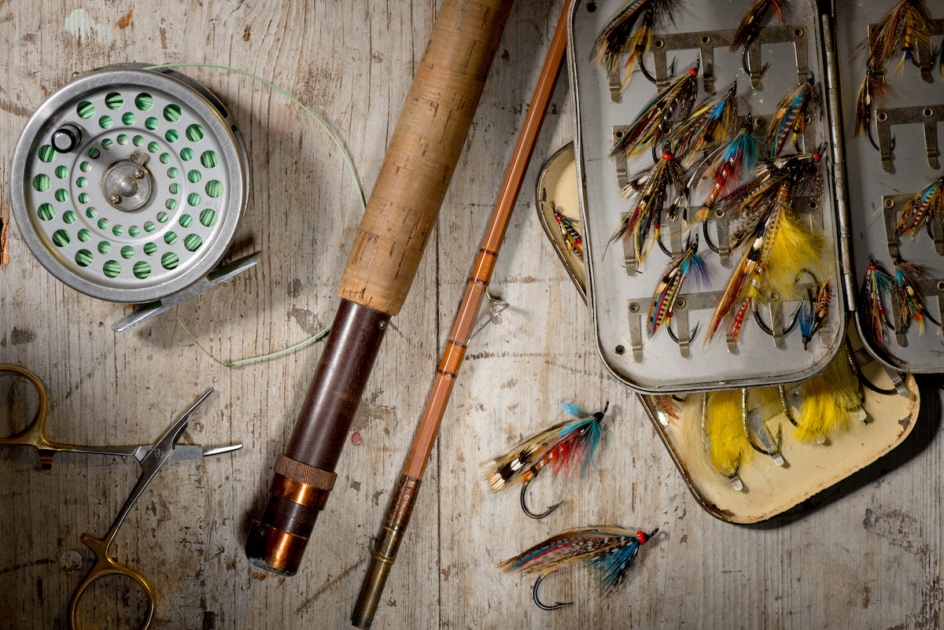
When it comes to fly fishing, many elements are important, such as the form of your cast and the length of the pole. But nothing is more important than the actual fly you use. So how do you know which one best? Below are some important tips and terminology for selecting the right fly for the fish you want to catch.
If you’re new to fly fishing, know that the fly is the bait used in this type of fishing, and it usually resembles an insect or larva. Compared to traditional bait used in conventional fishing, the fly is very light and glides across the water. The fly should imitate an insect’s natural behavior, making it more attractive for the fish to take a bite.
Before you hit the water
Take Stock
When choosing the correct fly, you should first familiarize yourself with the different kinds of flies that exist. Take stock of the flies you own and which ones you need. This will help you when it comes time to fish.
Select Your Catch
Knowing what kind of fish you are trying to catch will help. If you are in an area where trout and smallmouth bass are the main fish in the water, it’s best to use a fly that those fish are known to eat.
Assess Water Conditions
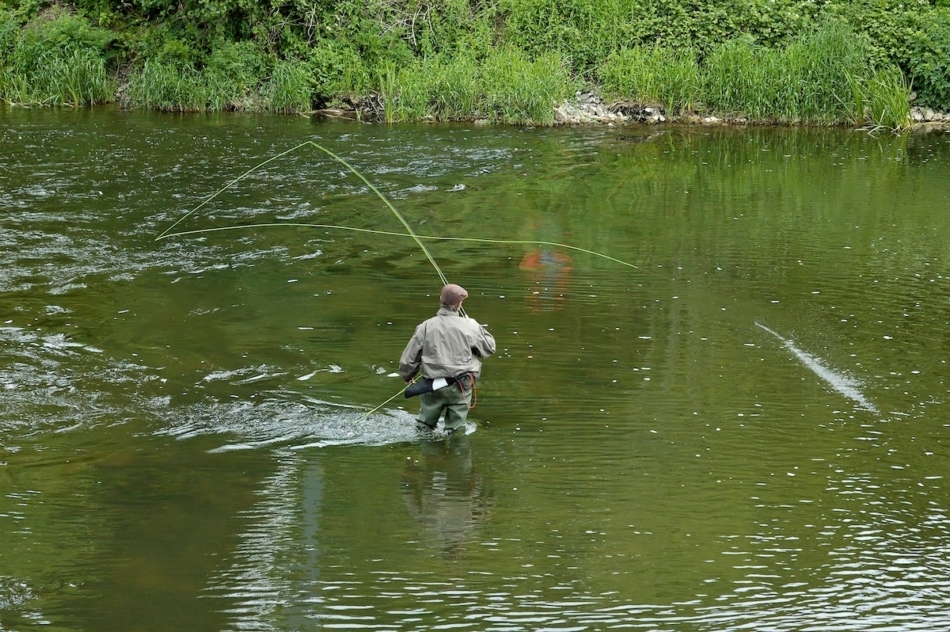
You should be a keen observer, especially when it comes to water conditions. Is the water level high or low? Is it flowing slow or fast? Is it murky or clear? All of these factors affect fishes’ behavior. It’s also wise to monitor your local weather conditions. And, of course, check the Farmers’ Almanac’s fishing calendar—it rates the day’s fishing conditions based on phases of the Moon and other factors rather than your local conditions.
Read: Do Phases of the Moon Affect Fishing Conditions?
Find Out What’s Hatching, When
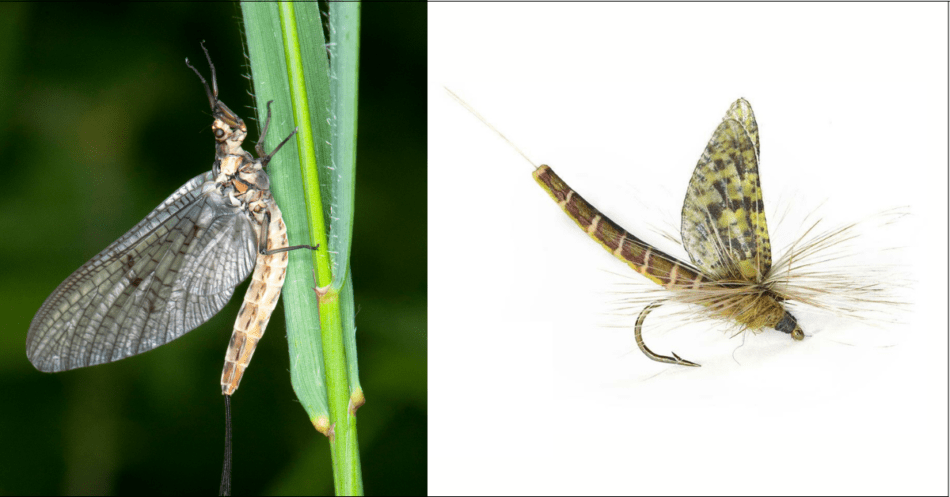
When you’re on the water, using the correct fly should be associated with the insects that are currently flying around. For example, during the month of June in most parts of the country, mayflies are in the midstage of their life cycle, compared to March when they’re just hatching. So, if it’s June, and you’re heading to a trout steam, you’ll want to select the fly that imitates an adult Green Drake mayfly (see above). Using other flies could still be efficient, but harder to predict when it comes to the fish going in for the bite. Your local fly fishing outfitter can help you, and they’ll have more specific information regarding your region.
A common phrase in the fly fishing world is “Match The Hatch,” in other words, always match your flies to what’s commonly hatching where you are fishing. Try this: head to your favorite stream and turn over a larger rock and watch what signs of life are swimming around in terms of larva and insects. This will help you better pinpoint which fly is best for your day on the river!
Dry Flies Vs. Wet Flies – What’s The Difference?
There are two types of flies you can use to catch fish: dry and wet:
Dry Flies
Used more often, dry flies are meant to resemble the adult stage of a flying insect that lands on the surface of the water and floats downstream. Fish can see the fly hitting the water and will snap up the bait if it looks natural and appealing.
Terrestrial bugs, which are bugs usually found on land (grasshoppers, beetles, and ants), have been known to accidentally fall in and float across the water, providing a tasty meal for fish. So flies can be tied to resemble these creatures as well.
Wet Flies
Wet flies are flies that float below the surface of the water. They are designed to look like insects that hatch and are in the process of making their way to the surface (known as “nymphs”).
Another type of wet fly is a “streamer”— a larger fly designed to imitate baitfish, crayfish, and leeches, another tasty snack that fish enjoy. Streamers are the fly-fishing equivalent of conventional fishing lures.
Because wet flies maneuver below the water surface, some anglers will use a “strike indicator” to help them determine if a bite has happened. The most simple way to describe a strike indicator is that it’s similar to a bobber in conventional fishing. Learn more about them here.
Time to make the cast
While trout and salmon are considered the top catches in fly fishing, other fish enjoy eating insects, too, including pike, bass, carp, and panfish. Every angler knows sometimes you are targeting one kind of fish yet another species will latch onto your bait. It’s common for anglers to be fishing for trout and catching chub fish because they often occupy the same streams. If saltwater areas are closer to you, you can try your odds at casting for snook, redfish, bonefish, and striped bass.
Fly fishing is a meditative pastime for a lot of anglers, so understanding the nuances of the hobby will make your time on the water a lot more fun and relaxing. Don’t be afraid to try different flies on the water to see what the fish are looking for that day. Eventually, you’ll be skilled enough in recognizing different flies, you can start tying your own.
Fly Tying – An Art Form
You can buy flies pre-tied at any place where fishing gear is sold, as well as online, and they’re fairly inexpensive (typically $2–$3 each), depending on where they were made and what they’re made out of. But fly tying is considered a relaxing art form and many people take up this hobby, even those that don’t fly fish! Watch this fly tying expert create a Green Drake mayfly, as mentioned above!

Larry Fleury
Larry Fleury is a writer and outdoor photographer who has a background in atmospheric science, marketing, astrophotography, creative writing, and all things outdoors. His photography has been featured by The Weather Channel, Midwest Living Magazine, and National Geographic Your Shot. Larry lives on the edge of the Ozark Mountain Range in Southeast Kansas, where he spends his free time fishing, camping, hunting, hiking, storm chasing, and playing guitar on the porch.


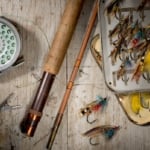
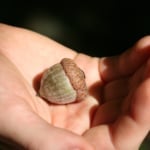

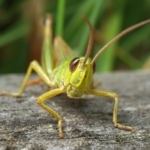
Here’s a nice brown trout I caught on a dry fly a few weeks ago.